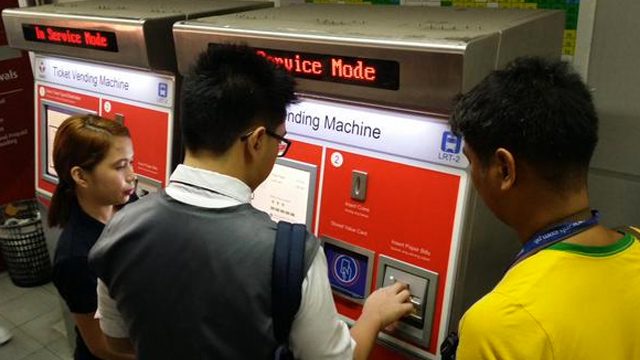SUMMARY
This is AI generated summarization, which may have errors. For context, always refer to the full article.

MANILA, Philippines – The Department of Transportation (DOTr) said on Friday, January 3, that it was reviewing its concession agreement with AF Payments Incorporated (AFPI), which increased the beep card issuance fee at the start of the year.
From P20, AFPI jacked up the issuance fee of the beep stored value card to P30 effective January 1. That’s a 50% jump from last year.
In its website beep card describes itself as a “stored value contactless card that can be used for fare payments” in the LRT1, LRT2, and MRT. “It can also be used in select city buses such as BGC Bus, Citylink Coach Services and majority of the Point-to-Point (P2P) buses. It is also accepted in NLEX and CAVITEX to pay for toll fees.”
The then Department of Transportation and Communications signed the deal with AFPI, jointly owned by the Ayala Group and Metro Pacific Investments, on March 31, 2014.
Section 16.5.b of the agreement stated that stored value cards distributed until December 31, 2019 will be charged an issuance fee of not more than P20, while those released after the said date will be charged a fee not more than P30.
“Currently, the DOTr is reviewing the said concession agreement and all its provisions, with the end view of determining how best to protect public interest,” the DOTr said.
DOTr communications director Goddes Libiran told Rappler that after its evaluation, the agency would release a report possibly next week.
What can happen: Pending review, the agency may request AFPI to return to the original price of the beep cards. If AFPI does not oblige, the public transport operators of each line would shoulder the P10 increase.
The Light Rail Manila Corporation (LRMC) operates line 1 of the Light Rail Transit (LRT1), the Light Rail Transit Authority operates the LRT2, while the DOTr handles the Metro Rail Transit line 3 (MRT3).
The LRMC is also under a joint venture of Metro Pacific Investments and Ayala Corporation, as well as the Philippine Investment Alliance for Infrastructure.
The LRT1 runs from Baclaran to Monumento; the LRT2 travels from Santolan to Recto; and the MRT3 goes from North Avenue to Taft Avenue. – Rappler.com
Add a comment
How does this make you feel?
There are no comments yet. Add your comment to start the conversation.